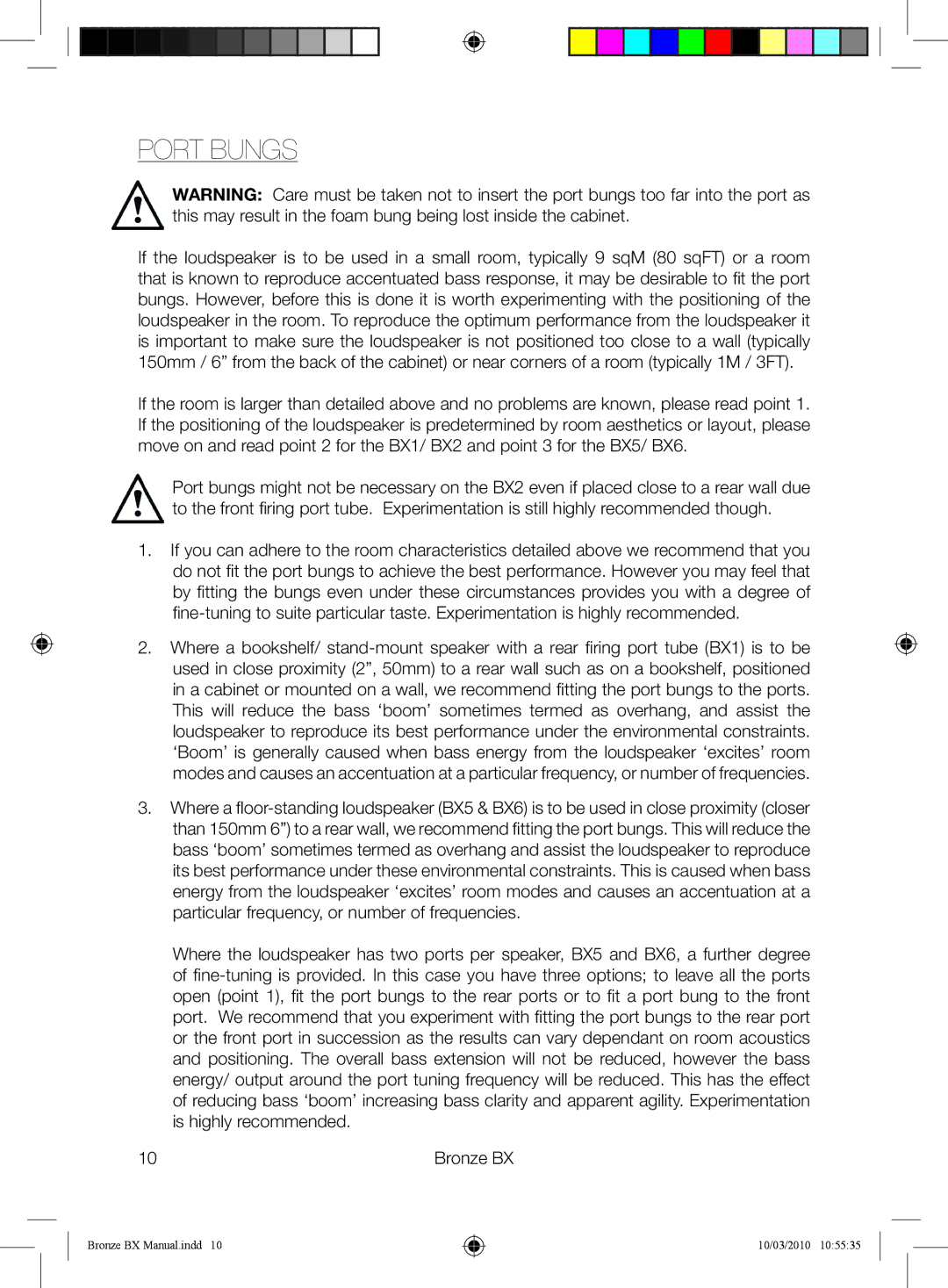BX Series specifications
The Monitor Audio BX Series is a renowned line of speakers celebrated for its exceptional audio performance, versatility, and aesthetic appeal. Designed to cater to the needs of discerning audiophiles and casual listeners alike, the BX Series brings forth a range of innovative technologies and features that enhance sound quality and user experience.One of the standout features of the BX Series speakers is their use of advanced driver technology. Each speaker incorporates Monitor Audio’s proprietary C-CAM (Ceramic-Coated Aluminium/Magnesium) driver technology. This material is known for its rigidity and lightness, enabling drivers to deliver accurate sound reproduction across a broad frequency range. The C-CAM domes are meticulously crafted to ensure minimal distortion, resulting in clear mids and highs that are ideal for music and movie applications alike.
The BX Series also employs a sophisticated cabinet design, engineered to minimize resonance and enhance sound clarity. The cabinets are made from high-quality MDF (Medium-Density Fiberboard), which is both sturdy and acoustically inert, allowing for a more pure sound without unwanted coloration. The elegant finishes available in the BX Series, including real wood veneer, further contribute to its aesthetic appeal, making these speakers a stylish addition to any home décor.
Another notable characteristic of the BX Series is its versatility in configuration. The lineup includes a variety of models, from compact bookshelf speakers to larger floor-standing units, accommodating a wide range of listening environments. This makes it easy to find the perfect fitting speaker for any living space without compromising on sound quality.
Connectivity and user-friendly features are also integral to the BX Series. Many models in the lineup include multiple inputs, allowing seamless integration with various audio sources, from traditional stereo systems to modern digital setups. This flexibility ensures that the BX speakers can adapt to the user’s lifestyle and preferences.
In terms of performance, the BX Series excels in providing a balanced soundstage and dynamic range. Whether you’re listening to your favorite music or enjoying a film, the immersive audio experience created by these speakers transforms everyday listening into something extraordinary.
In summary, the Monitor Audio BX Series stands out for its combination of advanced driver technology, elegant design, and versatile application. With their ability to deliver audiophile-quality sound in a stylish package, the BX Series speakers are a worthy investment for anyone serious about audio performance.

